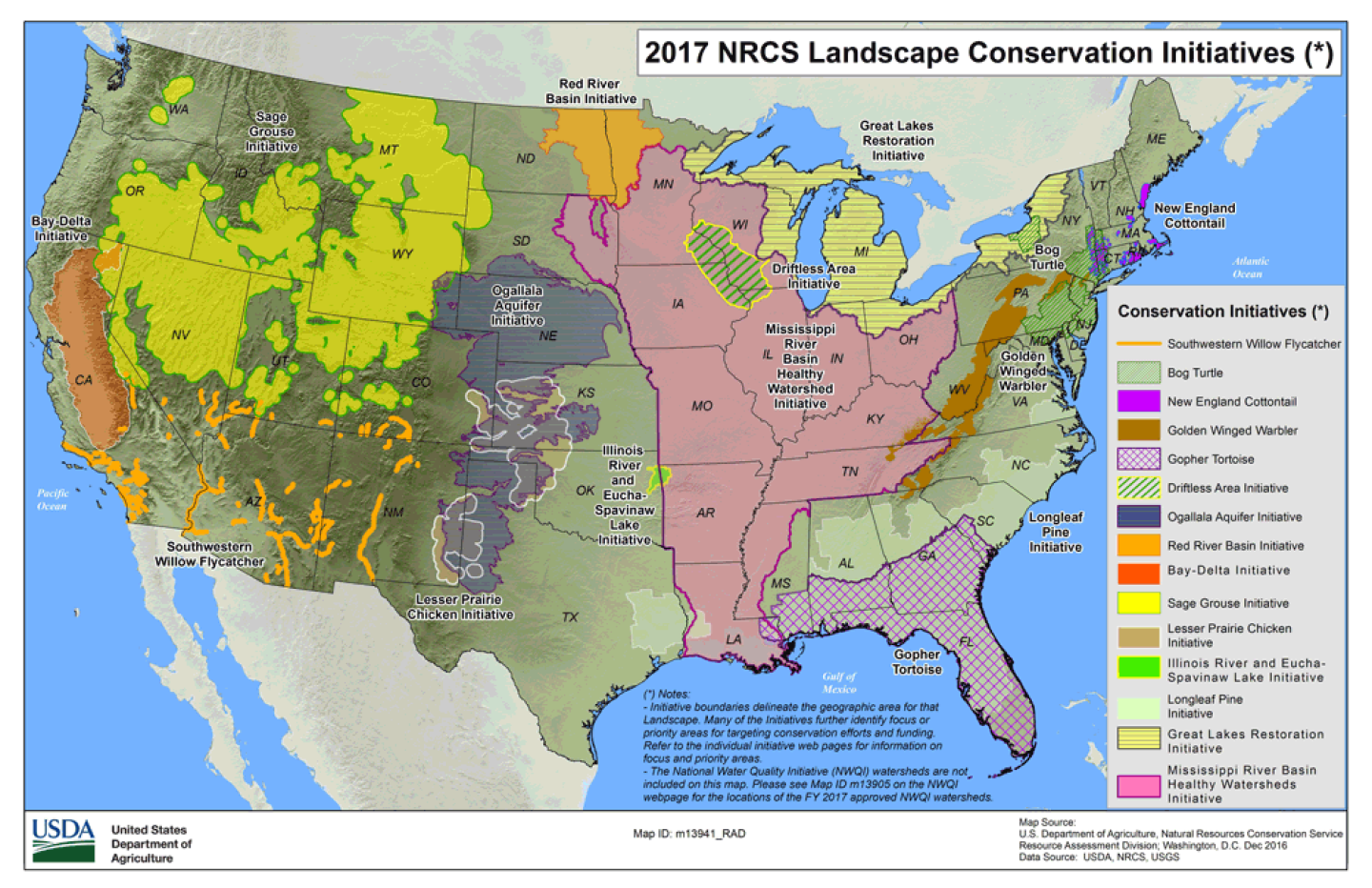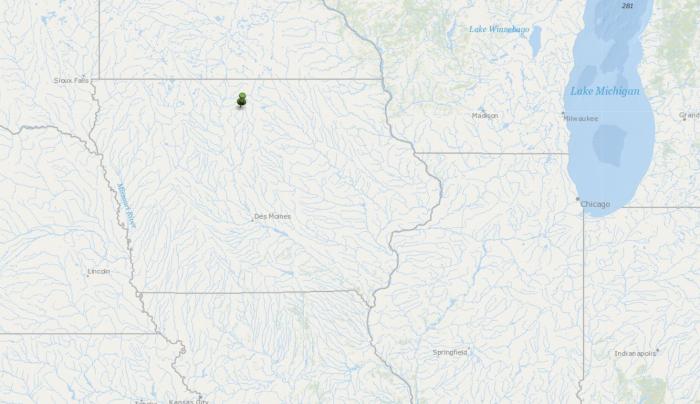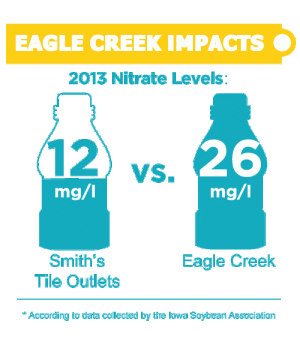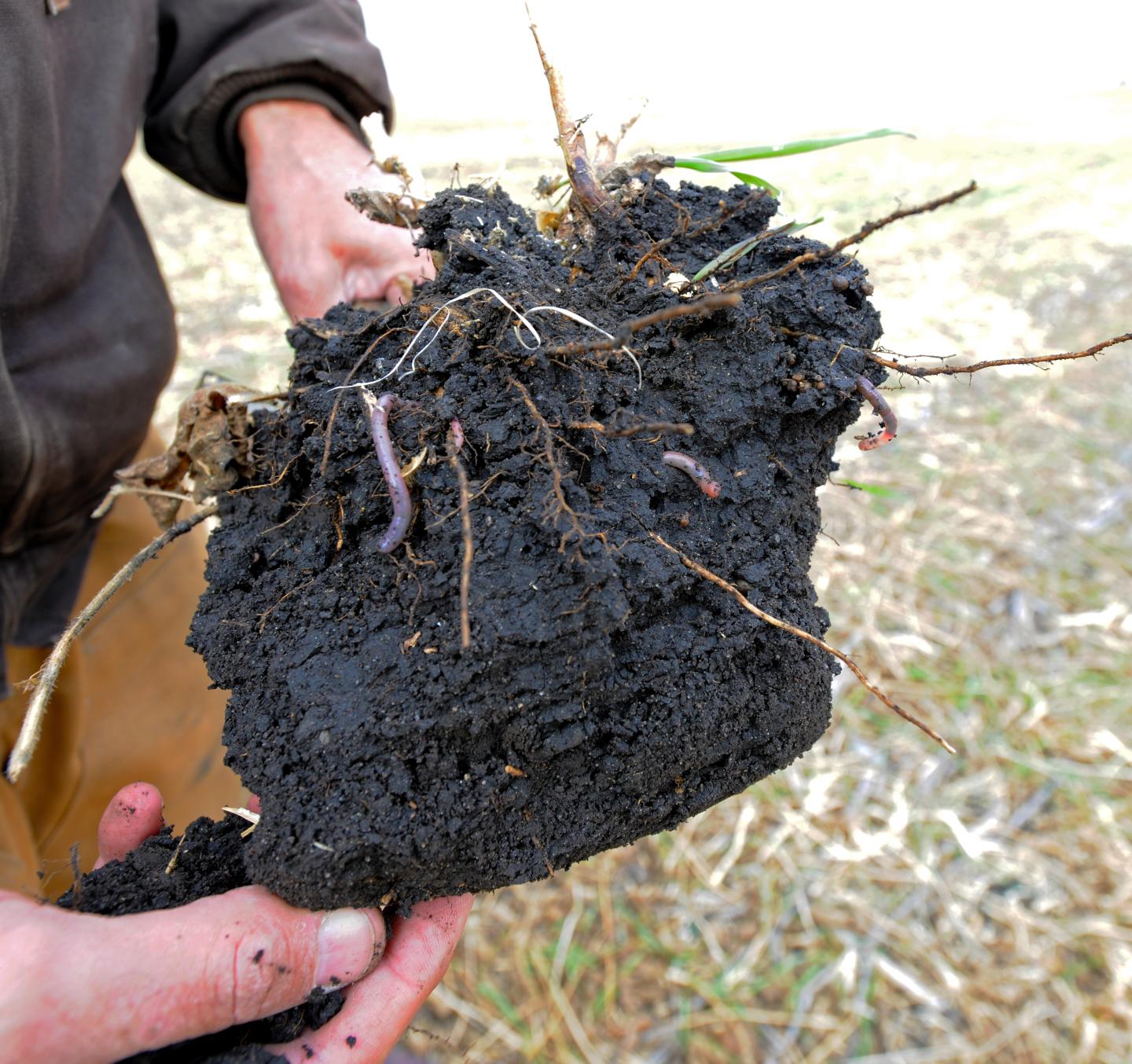Stepping Up for a Cleaner Mississippi River

Meet Iowa's 2015 Soil Conservation Farmer of the Year Award recipient, Tim Smith, one of the many conservation farmers participating in a USDA program designed to reduce nutrient and sediment loading in the Mississippi River Basin.
The NRCS-administered Mississippi River Basin Healthy Watershed Initiative (MRBI) was designed for farmers just like Iowa’s Tim Smith.

Launched in 2009, the initiative involves 13 states, from Minnesota to Louisiana, and is designed to help farmers in small watersheds voluntarily implement conservation systems to help reduce agricultural impacts in local watersheds and support state reduction strategies. Farmers receive MRBI assistance to implement avoid-control-trap practices to keep valuable nutrients on the farm and out of local waterways.
We All Live in a Watershed

Smith lives on the family Century Farm where he grows about 320 acres of corn and soybeans. He also rents another 500 surrounding acres. His farmland sits in the Boone River Watershed, where the water flows downstream to the Des Moines River, then to the Mississippi River, and eventually to the Gulf of Mexico.
After working with a local conservation planner, Smith modified the management of 90 percent of his Wright County 800-acre farm in the Boone River watershed. Through MRBI, Smith added cover crops, drastically reduced tillage by switching to a strip-till planting system and reduced his fertilizer use by following a nutrient management plan.
Tim Smith in Wright County harvests his strip tilled corn in a field planted with cereal rye cover crop. When Smith aerial applied NRCS-funded cover crops for the first time in the fall of 2011, it was perhaps the most dramatic change to his farm, he says, since his father traded his moldboard plow for a chisel plow.

And that change is producing dramatic results.
Watershed project coordinators began comparing nitrate levels in water leaving Smith’s tile outlets to nitrate levels in adjacent Eagle Creek in spring 2011, prior to practice implementation.
According to edge of field monitoring at that time, peak concentration levels of nitrate in water leaving Smith’s tile were slightly higher than creek water. However, after practice implementation, peak levels in Smith’s tile outlets were half those in Eagle Creek from tests conducted in 2012 and 2013.
According to data collected by the Iowa Soybean Association, nitrate levels in 2013 were approximately 12 mg/l in Smiths' tile outlets compared to 26 mg/l in Eagle Creek. The allowable drinking water standard is 10 mg/l. “This indicates to me that the practices are working,” said Bruce Voigts, MRBI Coordinator for the Boone Watershed, “particularly the cereal rye cover crop that nabs nitrates when the plants aren’t there to use them.”
Clean Water and Healthy Soil
The practices Smith installed through MRBI are the same practices that improve soil health. By shifting his tillage system from ridge till to strip-till — a less soil disturbing method where a farmer plants into a narrow-width tilled strip that is typically created in the fall — Smith reduced soil disturbance and erosion.
Strip-till is particularly effective in the poorly drained wet soils of north central Iowa. Farmers are able to complete field operations in just two passes – making strips in the fall and simultaneously planting and applying nitrogen fertilizer in the spring. Where no-till is not feasible, strip-till is the next best practice for reducing soil erosion.
The minimal amount of soil disturbance with strip-till helps to sequester carbon in the soil which helps keep microbes, including fungi, alive to form soil organic matter.

Smith says the most noticeable thing is all of the earthworm holes. “When you till the soil, you destroy that pattern,” he says. “Our soil is not a chemistry lab. Without beneficial soil organisms, NP&K are unable to reach the crop through roots. It takes micro-organisms digesting the nutrients to make them available to the plant to be used.”
Like many Iowa farmers using cover crops, Smith applies cereal rye which overwinters, sequesters nitrogen and helps reduce soil erosion. “I like cereal rye because you can see it coming up quickly,” he said. “It grows well. I think that’s where farmers should start with cover crops.”
Today, Smith is encouraged by the improving soil and water conditions on his property. “Healthier soil long-term means more crop sustainability and better yields with fewer inputs,” he said.
And the water quality benefits are spreading farther than the creek running through Smith’s farm. He is a conservation farming advocate and avid promoter of conservation practices, winning the 2015 Iowa Soil Conservation Farmer of the Year Award sponsored by the Iowa Department of Agriculture and Land Stewardship. He hosts student field days, working with urban middle school science students to graduate students at Iowa State University.
“We all need to step up for conservation and water quality and start doing things like cover crops,” Smith said. “It’s a long-term process but the benefits are going to add up.”


